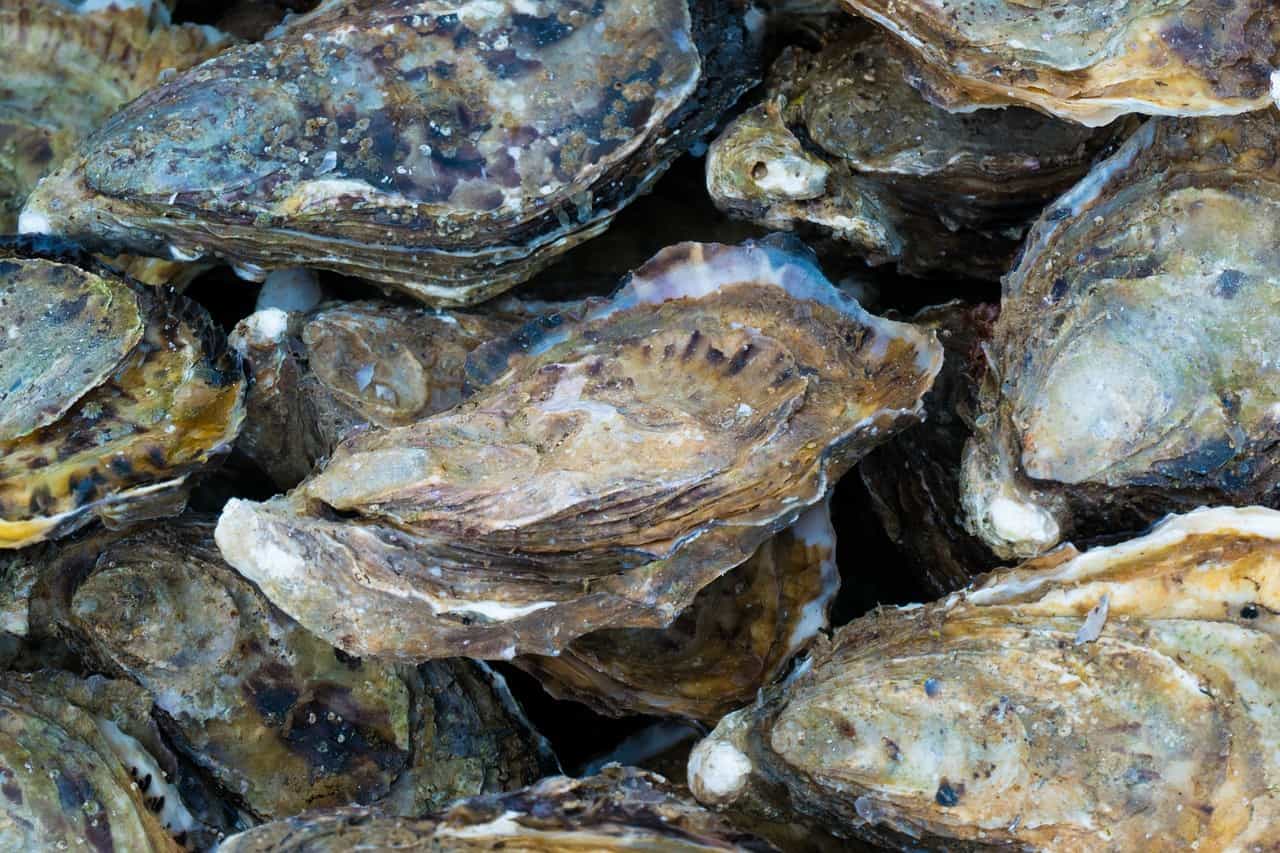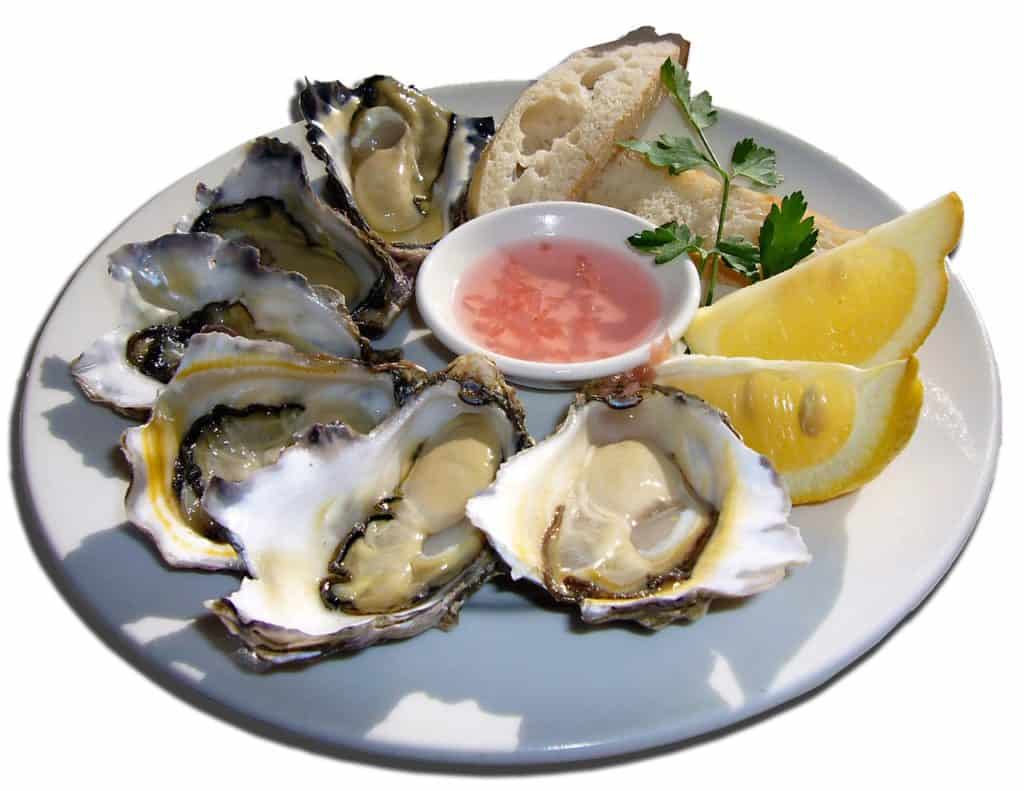Image by Kate Baucherel from Pixabay
I am flabbergasted at the number of folks who enjoy oyster soup or stew as a traditional Christmas Eve staple, or on Christmas Day. This delicious, gelatinous gob of phylum Mollusca, (note my sarcasm) satisfies the bellies of many year-round, but especially during the Christmas season.
How you oyster lovers stomach eating them is beyond me! I get nauseous at the very thought. Still, in order to keep the Edgerton Enterprise readership highly educated in all matters of food and story, I present to you today- the history of the oyster.
The facts on oysters
There are two families of oysters. “True Oysters” are of the Ostreidae family and “Pearl Oyster” is of the Pteriidae family. The True Oyster is of the common eating variety, whereas the Pearl Oyster is for the production of a pearl. It is interesting to note that most shell-bearing mollusks can make a pearl. This doesn’t mean that the pearl will be of any value.
All oysters are fed by a filtering system. The oyster opens its shell and water is drawn in over its gills. The gills, lined with mucus, pick up plankton. After capturing the plankton, the gills send it onto the mouth where it is eaten, digested, and promptly excreted.
Oysters are incredible ecological water filters for bays and estuaries. In the 1600s through 1700s, the Chesapeake Bay oysters “heyday”, the oyster population could filter all the water of the bay in three to four days. Incredible!
Today, due to past over-harvesting and lack of “oyster ecology”, the oyster reef of Chesapeake bay, would take an entire year to filter the bay.
Oyster life cycle
Oysters generally spawn in late July or early August when the rise in water temperature is detected. In the warm water, female oysters release their eggs and male oysters release their sperm. Nature takes its course and the fertilized eggs become larvae. The larvae find a home, usually on top of another oyster’s shell, where they will grow for a year and reach maturity.
Eaten almost to extinction
With this abundance of oysters, eating oysters became a staple in local communities and eaten by rich and poor alike. Oyster abundance made them a cheap commodity.
As the 1800s rolled in, newer technology in transportation and canning gave the rest of America a voracious appetite for oysters. From local pubs and restaurants to oyster bars and family homes, oysters were eaten at breakfast, lunch, and dinner. Eating oysters were considered highly fashionable and one served them on a special oyster plate.
The popularity of oysters came to a stretching halt in 1924, when the city of Chicago experienced a typhoid outbreak. The outbreak was traced to oysters being exposed to sewage pollution.
Typhoid fever is caused by the bacterial Salmonella Typhi. Salmonella Typhi is contracted by eating food or drink that has been contaminated by the urine or feces of infected people. Bet you oyster lovers are happy to have read that. Try not to think about it as you eat your oysters this Christmas.
How did we come to oysters at Christmas?
Having oyster stew or soup at Christmas is a bit of a conundrum. But as best as I can tell, per many an article, serving oyster stew on Christmas Eve came from the Irish immigrants fleeing Ireland because of the potato famine. The Irish served ling fish in a stew on Christmas Eve. Since oysters were more prevalent than ling fish, (cod family), the Irish folk used oysters instead.
There you have it, friends. So begins the American tradition of oyster stew or soup at Christmas, thanks to the Irish. I can assure you there will be no, NONE, not a bi-valve, gelatinous, slippery gob of oyster in this house, E V E R.
Till next time. Here is to good food, good friends and a very good life.
Resources:
- https://simplyoysters.com/oyster-history
- https://en.wikipedia.org/wiki/Oyster
- https://www.umces.edu/oysters/history
- https://www.oystergardener.org/oyster-history
- http://campusarch.msu.edu/?p=4962
- https://fillyourplate.org/blog/christmas-traditions-on-the-farm-oyster-stew-on-christmas-eve/

Michele Bruxvoort is sure to draw you in with her delightful sense of humor and love for living life. She enjoys reading, repurposing, as well as remodeling the family home with her husband. Drawing from her life experience as wife, mom, and follower of Jesus, Michele brings you a very honest and real perspective on life. When you don’t find her writing, you can find her mowing lawns, stocking shelves, taking care of her grandbaby and tackling her latest life adventure.
Wisconsin native and empty-nester, she now makes her home with her husband of 27 years in the South West Prairie plains of Minnesota.





Interesting info! Hubby would love this but not me 🙂 Thanks so much for linking up at the Unlimited Link Party 62. Pinned and/or shared!
Dee, I don’t like oysters either. PASS! You and I will stick together on this! Thanks for the pin.
Michele
Oysters and not for me but they have collagen which is good at keeping you young looking!
CONGRATS! Your post is FEATURED at my Unlimited Link Party 63!